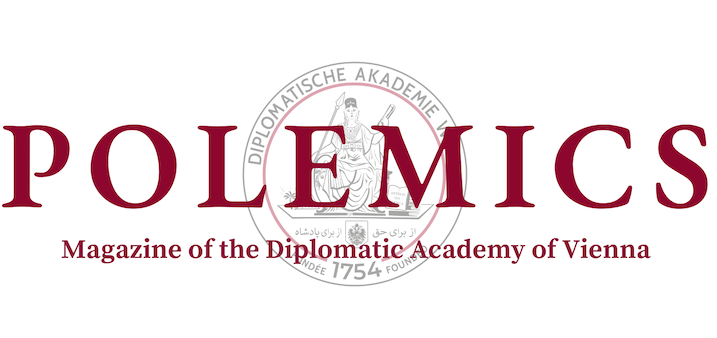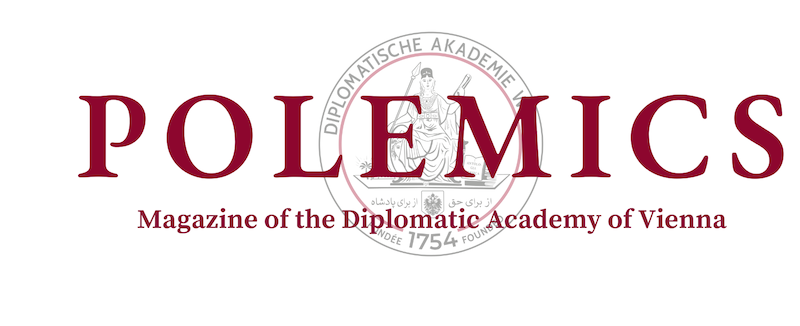Azerbaijani President Ilham Aliyev heaped more praise on what he termed a “successful anti-terrorist operation […] that lasted less than a day” than the students and staff of Karabakh University in a speech on 20 September commemorating the school’s opening. His comments marked the first official celebration of Azerbaijan’s newly established “Sovereignty Day”, and more grimly, the anniversary of the 2023 humanitarian crisis that saw over 100.000 ethnic Armenians abandon their homes in the mountainous region of Nagorno-Karabakh. Last year’s military operations marked both the functional restoration of Azerbaijani sovereignty and the end of a separatist, Armenian-led republic which waged two wars against the Azerbaijani state in an attempt to have its de facto independence recognised as a de jure reality.
Much like conflicts the world over, civilians were always the first to suffer whenever long-simmering ethnic tensions in Nagorno-Karabakh boiled over. Karabakh’s ethnic Armenian diaspora are the conflict’s newest victims, with 99% of that population fleeing in 2023 in fear of ethnic cleansing. But as Aliyev himself pointed out in his inaugural address, they are far from the only people touched by the conflict.
By October 2023, his government had invested over USD 7 billion in rebuilding and resettling formerly dispossessed Azeris, with further plans to resettle 40.000 of the 600.000 displaced decades prior by 2026. To the credit of the South Caucasian Republic, the Azerbaijani state was also quick to form a reintegration plan for displaced Armenians; one which claimed to offer extensive minority rights. This reintegration plan has yet to convince many returnees: while the streets of Khankendi are freshly repainted and paved, they remain half-empty.
Calls by the International Court of Justice (ICJ) and international organisations for the “safe, unimpeded, and expeditious” resettlement of the displaced have done little to improve the situation. If Azerbaijan’s reintegration plan is to restore residents to their homes, the international community will need to address any concerns of mistreatment refugees may still have by providing more localised support and oversight in Azerbaijan. However, the failure of previous international oversight efforts such as the ceasefire brokered by the Minsk-group and Russian peacekeeping suggest this task may be as complicated as it is essential.
Despite repeated Azerbaijani reassurances of no humanitarian wrongdoing, a group of human rights watchdogs have accused the government of tacit ethnic cleansing. The American-based Freedom House’s special collaborative crisis report alleges that the residents living within the zone under separatist control faced “regular attacks, intimidation, deprivation of basic rights and adequate living conditions, and forced displacement”, citing interviews with hundreds of refugees and the scarce supplies after the Azerbaijani blockade on the Lachin corridor. The report labelled these actions as ethnic cleansing according to the International Convention on the Elimination of All Forms of Racial Discrimination (CERD) and precedent set by United Nations (UN) rulings on similar cases of ethnic persecution in the former Yugoslavia. Others, such as former prosecutor of the International Criminal Court (ICC) Luis Moreno Ocampo went further, accusing Azerbaijan of genocide on the same material grounds as the Freedom House report.
THE ARID VALLEYS OF NAGORNO- KARABAKH ARE NEARLY AS THICK WITH HISTORICAL DISAGREEMENTS AS THEY ARE WITH THE PHYSICAL MARKERS THAT COME WITH SEVERAL THOUSAND YEARS OF HUMAN HABITATION.
As harsh as they may be, these reports have yet to improve the material situation in Karabakh. External diplomatic pressure has been overshadowed by the international favours heaped on Azerbaijan after the humanitarian crisis, most notably the decision to host the prestigious COP29 summit in the country’s capital. Azerbaijan’s territory straddles the tail end of China’s Belt and Road Initiative, major natural gas lines to Europe (actual) and the Gulf of Persia (planned) and several other strategic crossroads. With Russia distracted in Ukraine, the small state has the opportunity to play kingmaker in the South Caucasus by balancing between regional powers like Turkey, Iran, and Russia. Europe is hardly immune to Azeri charms, a truth both proven by continued strategic partnerships and the fact that pro- Armenian complaints have been largely confined to French protests.
The arid valleys of Nagorno-Karabakh are nearly as thick with historical disagreements as they are with the physical markers that come with several thousand years of human habitation. Nearly every town, monument or prominent rock formation has multiple competing names and origin stories. Consider the new University of Karabakh: Should its students refer to the surrounding town as Khankendi, out of respect to ancient Azeri rulers? Or should they use the name Stepanakert, in honour of an accomplished Armenian revolutionary?
The ancient argument of “who belongs where” is absolutely foundational when it comes to understanding this conflict. Those who prioritise the Azeri’s claim to the land may point to the row of treaties after World War I that preceded the fragmentation of the Transcaucasian Democratic Federative Republic and the creation of the Soviet Socialist Republic of Azerbaijan, both of which recognised the area as legally part of Azerbaijan. They may also cite Russian Imperial documentation, which proves that thousands of Armenians and Azeris were relocated during the 1830s.
Pro-Armenian sources claim the absolute opposite, referring to over 1.600 years of recorded Armenian history that predates the 5th century Armenian Historian Movses Kaghankatvatsi. The displaced residents of Khankendi/Stepanakert would likely point to evidence in stone like the Amaras monastery, which they would consider 4th century Armenian handiwork and the resting place of their own St. Grigorius. Their history is one of persistence in the face of persecution, of Armenian princes striving for independence despite waves of occupation by foreign powers like the Umayyad and Abbasid Caliphates, the Seljuk Turks, and Safavid Iran. In this interpretation, Armenian Meliks functionally ruled Armenian communities in Karabakh almost until the 19th century, which others consider to be the date of their arrival.
The fact of the matter is that 100.000 ethnic Armenians have lost their homes and, with each passing month, any chance that they can feasibly return shrinks further and further. Forced or not, a refugee crisis on the heels of a military operation within a Council of Europe member state sets an alarming precedent during these dangerous times. The ICJ calls for resettlement need more international support, namely from regional actors and the OSCE Minsk Group which attempted to negotiate an end to the 2020 hostilities. Azerbaijan’s reintegration programme clearly requires more international oversight to ease refugee concerns and certain details may need to be amended or replaced. The international community must not allow one attempt to restore one people to their land to yet again come at the expense of another.









